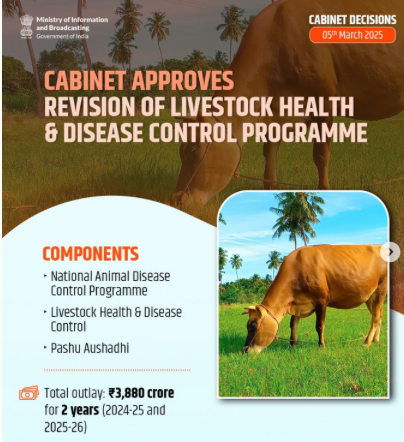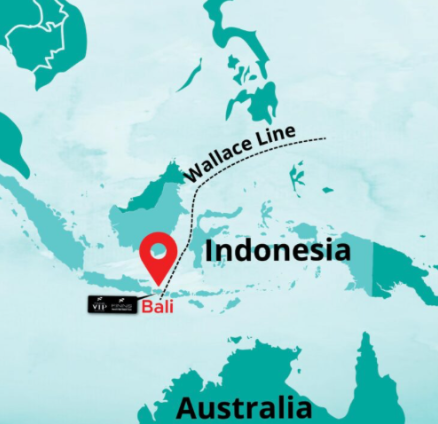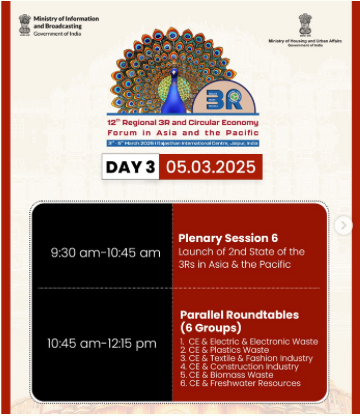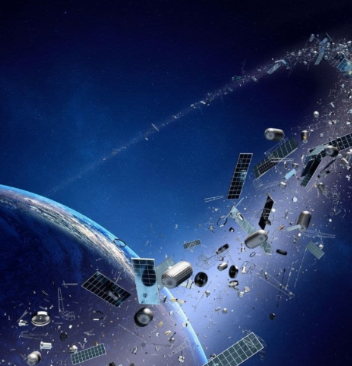Daily Current Affairs | March 6 2025 |
Important Topics from Current Affairs : 1) Livestock Health and Disease Control Programme 2) The Wallace Line 3) Parvatmala Pariyojana 4) Regional 3R & Circular Economy Forum 5) Issue of Space Debris
Jumbo IAS
3/6/20254 min read
1) Livestock Health & Disease Control Programme
The Union Cabinet, chaired by the Prime Minister Shri Narendra Modi, has today approved the Revision of Livestock Health and Disease Control Programme (LHDCP).
The scheme has 3 components namely National Animal Disease Control Programme (NADCP), LH&DC and Pashu Aushadhi.
It is a centrally sponsored scheme implemented by Department of Animal Husbandry & Dairying.


LH&DC Components
Critical Animal Disease Control Programme (CADCP),
Establishment and Strengthening of existing Veterinary Hospitals and Dispensaries - Mobile Veterinary Unit
Assistance to States for Control of Animal Diseases (ASCAD).
Budgetary Outlay - Rs.3,880 crore for two years i.e. 2024-25 and 2025-26.
Livestock Productivity
Productivity of the livestock is impacted adversely due to diseases like Foot and Mouth Disease (FMD), Brucellosis, Peste des Petits Ruminants (PPR), Classical Swine Fever (CSF), Lumpy Skin Disease, etc.
Implementation of the LHDCP will facilitate reduction in these losses by preventing diseases through immunisation.
The Scheme also supports door-step delivery of livestock health care through the subcomponents of Mobile Veterinary Units (ESVHD-MVU) and improving availability of generic veterinary medicine- Pashu Aushadhi through network of PM-Kisan Samriddhi Kendra and Cooperative Societies.
Benefits of this Scheme -
Prevention & control of livestock diseases by vaccination, surveillance and up gradation of healthcare facilities.
Improve productivity, generate employment, encourage entrepreneurship in the rural area and prevent economic losses of farmers due to disease burden.
2) The Wallace Line
In the 19th century, Alfred Wallace noticed a shift in the composition of organisms as he moved from Asia to Australia. He posited an invisible barrier in the ocean running between the islands of Bali and Lombok, striking north between Borneo and Sulawesi before curving south of Mindanao
This invisible biogeographic barrier is called Wallace Line.


Features of Wallace Line
Despite being just 20 km apart, islands on either side have distinct biodiversity.
To the west of the line, Asiatic species like tigers and elephants dominate, while to the east, we have Australian fauna such as kangaroos and marsupials.
Though there is no stark division in marine species.
Significance - Validates theory of Evolution that explains species diversification due to geographic barriers.
Formation of Wallace Line
Continental Drift - Millions of years ago, Australia separated from Antarctica and began drifting northward, eventually colliding with Asia.
Creation of Deep Water Channels - This movement created deep-water channels, like the Lombok Strait and Makassar Strait, which acted as barriers to species migration.
Emergence of Faunal Differences - The deep-water channels effectively isolated the fauna on either side, leading to the evolution of distinct species in the Indomalayan region (west of the line) and the Australasian region (east of the line).
3) Parvatmala Pariyojana
The government approved 2 ropeway projects, one for reaching Kedarnath Shrine and the other for Hemkund Sahib ji, in Uttrakhand to help pilgrims reaching easily to these holy places.
These two ropeway projects are part of Parvatmala Pariyojana, which is an infrastructure project to enhance connectivity in remote tough terrains.
Objectives of Parvatmala - Enhance connectivity, promote eco-friendly & cost-effective transport and boost tourism & local economy.


About Parvatmala
It is a National Ropeways Development Programme, launched in 2022-23 by Ministry of Road Transport & Highways (MoRTH)
Budget - ₹1.25 lakh crore for 5 years.
Implementation under Public Private Partnership (PPP) using Hybrid Annuity Model (HAM).
4) Regional 3R & Circular Economy Forum
The 12th Regional 3R and Circular Economy Forum in Asia and the Pacific concluded with the unanimous adoption of the ‘Jaipur Declaration’ by participating member countries.
A major highlight of the forum was India’s proposal to establish the ‘Cities Coalition for Circularity’ (C-3), a multi-stakeholder global alliance aimed at facilitating knowledge sharing and city-to-city collaboration in circular economy practices.


About this Forum
It is a regional forum, established in 2009, for various stakeholders to discuss sustainable management & circular economy practices.
3R Principles of Circular Economy - Reduce, Reuse and Recycle.
The 2025 forum was held in Jaipur and organised by Ministry of Housing & Urban Affairs, UN Centre for Regional Development (UNCRD), and Institute for Global Environmental Strategies (IGES).
Jaipur Declaration
This Year’s Theme - “Realizing Circular Societies Towards Achieving SDGs and Carbon Neutrality in Asia-Pacific”
Launch of ‘Cities Coalition for Circularity’ (C-3)’.
CITIES 2.0 Initiative - Agreements worth ₹1,800 crore signed for integrated waste management and climate action projects across 18 cities in 14 states.
Alignment of Circular Economy strategies with climate change and SDG goals.
India announced its bid to host the World Circular Economy Forum (WCEF) 2026.
5) Issue of Space Debris
On December 30, 2024, a metal object weighing 500 kg fell in Makueni county in Kenya.
Experts from the Kenya Space Agency characterised it as a separation ring from space bound rocket.
Similar incidents in USA and Australia in recent times have served as reminders for the urgent problem of space debris.
Space Debris - Defunct human-made objects in space – principally in Earth orbit – which no longer serve a useful function. Examples - satellites parts, spent rocket stages etc.


Challenges
Increased Accumulation - Increased space launches with the entry of private space companies further escalates the situation.
No International Binding Law - No international framework for space debris mitigation, responsibility allocation and liability enforcement.
Kessler Syndrome which threatens future space launches and existing space infrastructure.
Existing International Regulations
Outer Space Treaty (1967) - Holds states responsible for national space activities by both government and private entities.
Liability Convention (1972) - Imposes absolute liability on launching states for damage caused by space objects on Earth.
Space Debris Mitigation Guidelines (UN COPUOS) - Encourages safe disposal of satellites but remains non-binding.
25-Year Rule (UN) - Recommends de-orbiting satellites within 25 years, with only 30% compliance globally.
But all these laws are non-binding in nature.
Steps by India
ISRO System for Safe & Sustainable Operations Management (IS4OM) (2022) - Monitors space objects that pose collision threats to Indian satellites.
Project Netra (Network for Space Object Tracking and Analysis) - Detects, tracks, and catalogs debris as small as 10 cm up to a range of 3,400 km.
Space Situational Awareness (SSA) Control Centre (2020) - Functions as India’s central hub for monitoring and managing space traffic.


